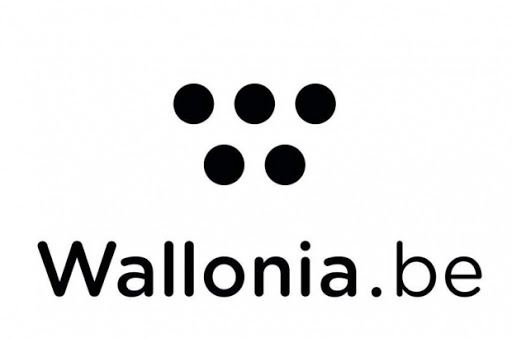AMOS key enabling technology on board of next generation hyperspectral satellites
AMOS recently won several contracts for Leonardo S.p.A. to supply a series of diffraction gratings for upcoming hyperspectral missions. This unique piece of technology is found at the core of advanced remote sensing instruments performing hyperspectral imaging spectroscopy. AMOS specialized optics will thus fly together with Leonardo components aboard PRISMA Second Generation, PLATiNO-4 and 4 hyperspectral satellites of the Italian IRIDE constellation. Participation to other institutional exploration and commercial Earth observation missions are also in discussion.
PRISMA is the national Italian hyperspectral programme initiated by the Italian Space Agency (ASI - Agenzia Spaziale Italiana) in 2008 for technology demonstration and research purposes. The first satellite was launched in 2019 and the second-generation satellite will ensure data continuity while implementing a series of performance improvements to which AMOS grating will contribute.
PLATiNO is an ASI programme focusing on the development of an innovative and multi-missions platform. 4 micro-satellites will be built and launched; each with a different payload (i.e. Multispectral, Synthetic Aperture Radar, Very High Resolution and Hyperspectral). For PLATiNO4, Leonardo will supply a compact and lightweight hyperspectral camera of the latest generation.
Thanks to the experience gained in the development of PRISMA, the instrument size and mass will be less than half of PRISMA itself, while guaranteeing equal performances.
IRIDE is a large constellation developed by Italian space companies in the context of Italy’s National Recovery and Resilience Plan (PNRR - Piano Nazionale di Ripresa e Resilienza). 4 of the 61 foreseen satellites will embark a hyperspectral instrument built by Leonardo and embedding an AMOS grating.
These contracts with Leonardo are rewarding several years of Research & Innovation efforts at AMOS supported by the Belgian Science Policy Office, the European Space Agency and the Walloon Regional Authorities (Service Public de Wallonie). Starting with flat components and ending up on free-form substrates, AMOS developed the “recipe” for ruling with Single Point Diamond Turning more and more advanced configurations up to so-called dual-blaze gratings. For the latter, the slope varies inside each groove to achieve a “2 in 1” capability for diffracting the incoming light. Improved spectral dispersion is hence provided by this engineered groove geometry while the flexibility in grating shape allows for throughput optimization over a broad spectral range.
This innovation has not only been demonstrated in the lab, it has also been used in practice, integrated into operational instruments design and sent to space. An extensive experienced was gained by AMOS through its successful participation in various satellite programmes. Flight heritage was achieved in 2019 with the launch of Chandrayaan II lunar probe from the Indian Space Agency “ISRO” embedding a multi-region grating (each with a specific blaze angle) made by AMOS. Thanks to this enabling technology, AMOS could design a very compact hyperspectral instrument named ELOIS which achieves a 4 times volume reduction compared to large European hyperspectral sensors such as PRISMA and ENMAP while offering similar radiometric performance over twice the swath. Made of Nickel-plated aluminum alloys, AMOS gratings are essential parts of in-house designed all aluminum athermal hyperspectral instruments. Thanks to high precision machined interfaces, these lightweight instruments are easy to assemble and align. Moreover, their homothetic thermal behavior guarantees stable radiometric performance in space. All these successful developments led to the participation of AMOS as a core team member for the CHIME (Copernicus Hyperspectral Imaging Mission for the Environment – also know as Sentinel-10) flagship mission of the European Space Agency part of the European Commission Copernicus Expansion programme. This project is led by Thales Alenia Space France as prime contractor having as instrument prime OHB System AG. Within the Instrument team, AMOS is in charge of the design and manufacture of 3 imaging spectrometers per satellite forming the core of the remote sensing instrument. Our optical design offers a very high throughput and low polarization sensitivity, guaranteed by the broadband convex diffraction grating, while best image quality and distortion control are enabled by our freeform mirrors explains Gregory Lousberg, System Engineer and Head of AMOS Optical Systems division. The CHIME project also proved to be an excellent
opportunity for strengthening the collaboration with Leonardo (in charge of the focal plane system, on-ground calibration and characterization and of the telescope) and for further demonstrating AMOS capabilities.
Last but not least, AMOS recently developed and validated a numerical model able to simulate the spectral scattering behavior of its gratings. This is a unique tool allowing for the identification of radiometric issues during early design stages hence giving the opportunity for further improving the grating groove profile, the spectrometer design or the optical coating selection to achieve stateof- the-art performance.
With these new contracts in the frame of which AMOS will deliver a total of 10 gratings, the Belgian company is consolidating its leading position in Europe as a front-runner in hyperspectral technologies.

